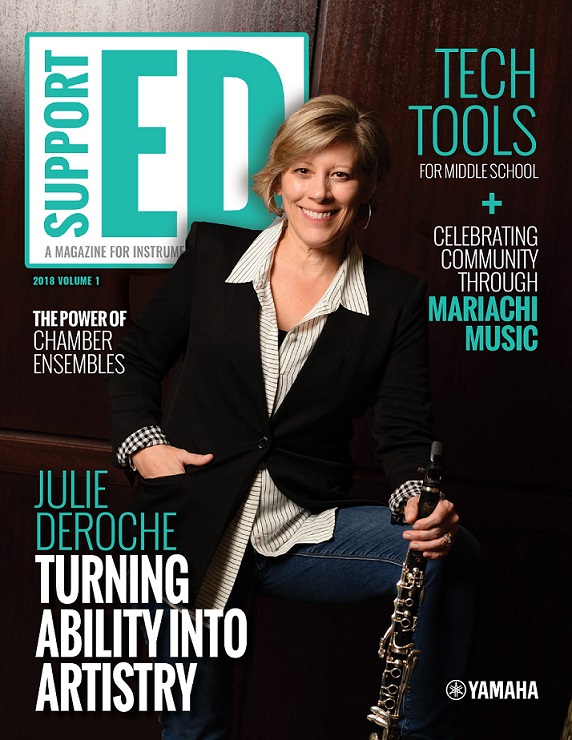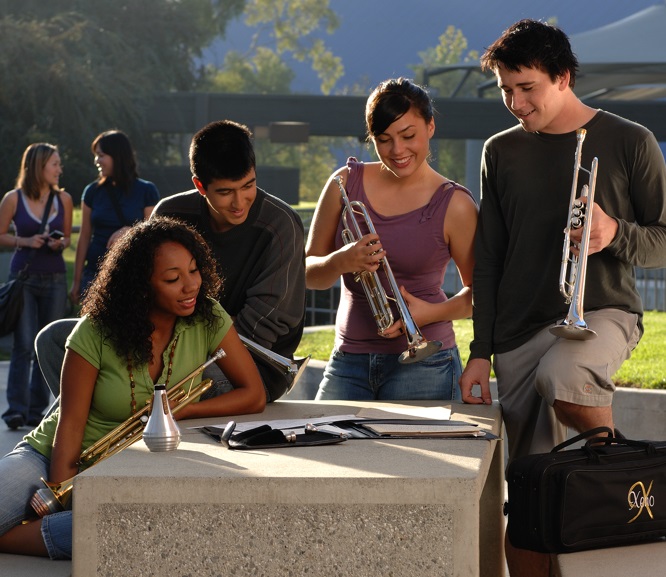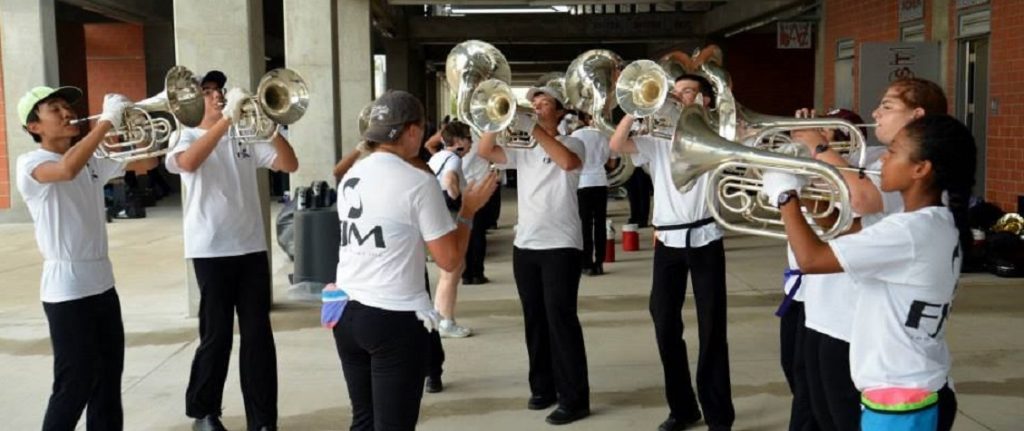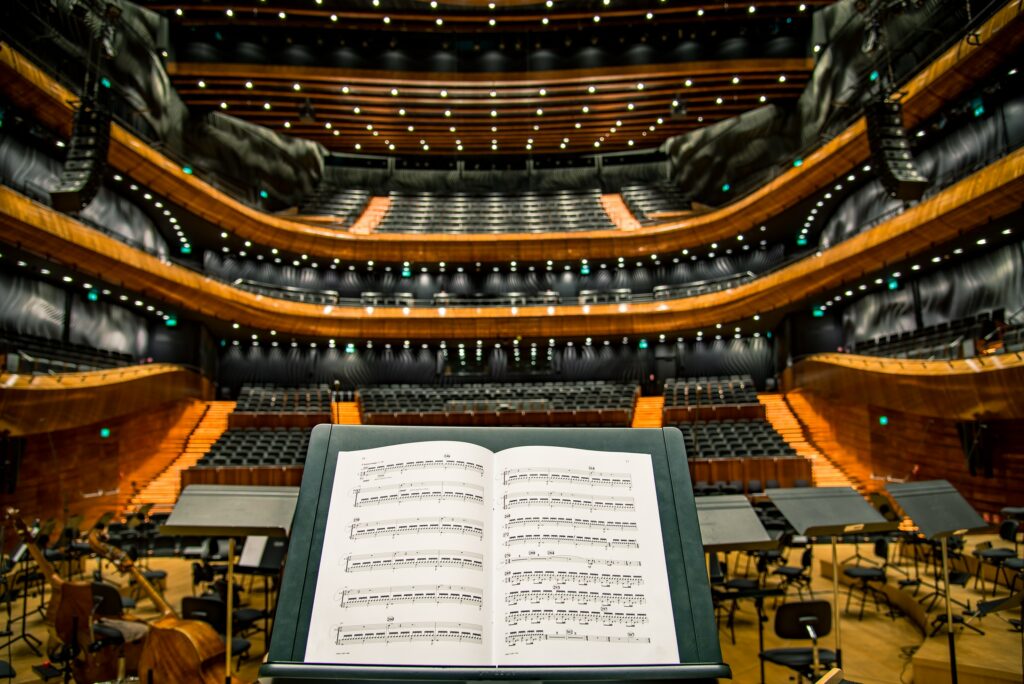Tagged Under:
Chamber Ensembles Help Develop Student Leaders
Performing in small groups can pack a big punch in musical growth and leadership capabilities.
Several students sit in a practice room, their chairs arranged in a small arc with their music sitting on stands among them.
After warming up, they run through their pieces, making improvements and adjustments to their individual parts as well as helping their fellow musicians. Through communication and leadership, the small group keeps itself on track and pushes toward the goal of a solid performance.
Being in chamber groups gives students greater control over their musical experiences as they select their own repertoire, run their own rehearsals, and show their audiences in all sorts of spaces — including, nursing homes, department stores and music festivals — the level of leadership they are capable of achieving. These skills, in turn, benefit the larger ensemble.
Starting Slow
The easiest way to recruit students to chamber music is to start them off in large instrument choirs, with up to 30 members on single instruments such as tubas or flutes, says Sam Ormson, music director from Mountain View (Washington) High School.
“It brings students into the chamber music realm in a nonthreatening way,” says Ormson, whose chamber ensembles have performed at the Music for All Chamber Music National Festival. “Then as they get older, they start to form other groups.”
Ormson recommends repertoire written in four parts for students to get accustomed to the musical style of a small group while staying comfortable in the larger numbers. Once students have developed to a higher level of musicianship, he suggests introducing them to publishers’ websites to let them select their own pieces.
Teaching Solid Fundamentals
Learning how to rehearse is a key component to chamber music success. “[I] make sure we demonstrate in a large ensemble all the fundamentals students need in a small group and show them how to rehearse it, so they can go through the same process without me,” Ormson says.
The subtleties of music, such as dynamic contrast, articulation and crisp rhythms, are the backbone, says Sam Pilafian, tuba soloist and arranger for the Boston Brass quintet. “If we’re doing scales or rounds together, we’re doing them in a certain dynamic and certain articulation, [and] we’re creating a language,” he says.
Both Pilafian and Ormson say warmup progressions that last about 10 minutes are the most beneficial for reinforcing basics before moving into the day’s music. Start with long tones, then lip slurs for brass and chromatic exercises for woodwinds. Articulation and technical studies should lead to air support and breathing exercises. Finish the progression with a chorale that incorporates strong intonation and dynamic range.
Learning to Listen
Musicians must listen to the parts around them in order to balance their own parts within the ensemble. “Getting a cognitive awareness for what’s around you and the ability to play at the same volume with similar tone is fundamental to making a chamber music experience work,” Ormson says.
Pilafian, who taught at the Frost School of Music at the University of Miami and was a founding member of the Empire Brass Quintet, recommends having students stand in the far corners of the room and choose another player to listen to. He also recommends having students sing their own parts, then sing each other’s parts to familiarize themselves with all facets of the piece.
“Have [students] listen [from a position that is] the farthest away [where] they can hear and track that person and their part,” Pilafian says. “Find the principal players. It’s fun for them, and they learn to lead musically because of exercises like that.”
Rounds and call-and-response exercises also help improve students’ listening skills.
Letting Students Lead
Chamber ensembles are designed for musicians to take greater ownership. Pilafian suggests that music educators take a “coaching” approach rather than directing the groups. “You can teach your leaders to step up in chamber music without too much pressure,” he says.
Ormson helps students select repertoire and instructs them in occasional “clinician” settings but gives them freedom during rehearsal to make their own musical decisions. “I know that I might have been able to make an ensemble achieve a higher musical outcome if I’d intervened more frequently, but the measurement of success goes far beyond that musical outcome,” Ormson says. “It’s the opportunity for students to grow as leaders and musical decision makers.”
Benefits to the Band
The skills students take back to the larger ensemble benefit them as well as the musicians around them. “It’s when they get back to the band that it really pays off,” Pilafian says. “They think in ways they’ve never thought before; they learn to take responsibility for the music. They can infect so many people around them with their seriousness in rehearsal and their ability to stay focused. They have a better ear, and all those musical fundamentals are strengthened and brought to the people around them.”
Those students can then be used to set a musical example by playing a hard section for others to emulate. “The other students always listen carefully when their peers play examples for them,” Pilafian says. “When [others] mimic the students who just played, the concepts you have taught carefully to the chamber groups are transferred to the whole band with less teaching time used in rehearsal.”
Student Benefits
Musicians who have experience in chamber groups can also transition more easily to be featured players in the larger ensemble. “Band members who have had chamber music training have learned to play solo lines with enough opinion and presence to warrant a musically supportive accompaniment,” Pilafian says. “Their featured moments will help the entire large ensemble to form unified musical moments.”
In general, chamber students become more effective in all types of rehearsals. “They realize how much time can be lost by not starting on time or how frustrating it can be to have someone absent from rehearsal,” Ormson says, “I have seen an increase of student engagement and a reduction in down time once chamber ensembles get established each year.”
Last but not least, chamber ensembles prepare students for life by teaching them people skills. “Music will teach you that kind of team management at a young age,” he says. “It’s the magic and chemistry of chamber music.”
Photo © 2018 Daniel Yang, All Rights Reserved
This article originally appeared in the 2018 V1 issue of Yamaha SupportED. To see more back issues, find out about Yamaha resources for music educators, or sign up to be notified when the next issue is available, click here.
















